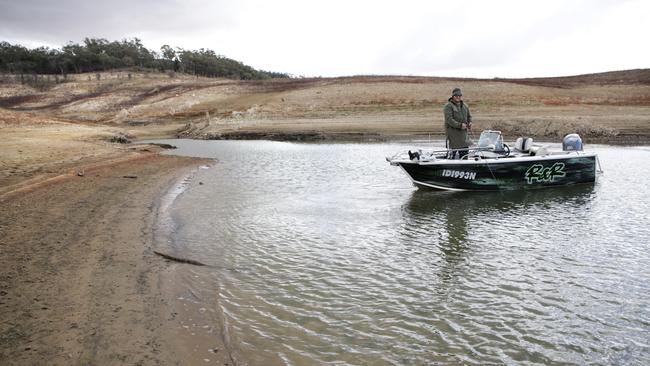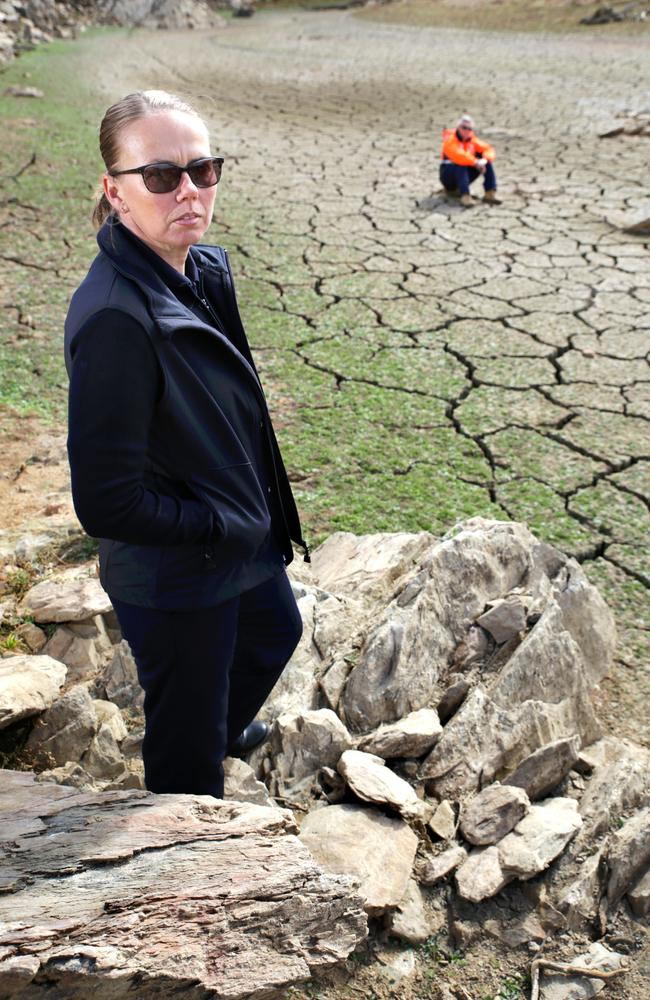New pipelines, dams and bores to keep water flowing to driest towns in NSW
A $78 million plan will build new pipelines, dams and bores for the state’s driest towns and cities, in a bid to stop inland centres like Tamworth, Orange, Bathurst and Dubbo, running out of water within a year.
NSW
Don't miss out on the headlines from NSW. Followed categories will be added to My News.
The state government will spend $78 million keeping water flowing to the state’s driest towns and cities, home to almost 200,000 people and on track to run dry within a year.
Without significant drought-breaking rain, inland centres including Tamworth, Orange, Bathurst and Dubbo, will run out of water within 12 months.

From tomorrow, the $78 million will flow to the state’s west and north to bankroll emergency water infrastructure such as new dams, pipelines, pumps and bores.
The emergency funding was not allocated in the latest state Budget, but was instead scraped together from various government departments, statutory bodies and the government’s high-priority infrastructure fund Restart NSW.
MORE FROM JACK MORPHET
Catholic childcare centres could cut fees by half
Desal plant to double as water crisis worsens
New God Squad: Seven priests ordained
Of the $78 million, $20.25 million will be given to rural councils and the other $57.81 million will go to the rural water supplier and river operator, Water NSW, to shore up flows in the Macquarie, Upper Namoi, Peel and Border Rivers valleys.
In the Central West, Water NSW will install pumps at the dwindling Burrendong Dam near Dubbo to suck out the final 4.7 per cent of water still left and temporarily raise a weir at Warren, which will help extend water supplies in places like Dubbo, Cobar, and Wellington for another 10 months.
At Orange, where 40,000 people can’t water their lawns or use evaporative coolers while they sleep because of level-four water restrictions, $5.5 million will be spent upgrading a pipeline to Wyangala Dam built during the Millennium drought.
At Bathurst, up to $2 million will go towards upgrading a wooden pipeline that transports water from a relatively disused dam built in the 1930s only used for industry and park watering.
A new pipeline to a nearby river, costing $1.5 million will be built at Walcha in the state’s north, which is also on level-four water restrictions.

Tenterfield in the state’s north has less than six months’ worth of water left, and emergency bores are already being dug but another $4 million will go towards treating the groundwater and increasing water efficiency in the town.
Bores will also be dig at smaller towns rapidly running dry, such as Tooraweenah and around Nyngan in the central west.
The money is expected to be spent within weeks, rather than months.
A further $3 million will be spread across drought-affected country towns to make water savings by fixing leaky taps and running toilets, according to Water Minister Melinda Pavey.
“In June, I wrote to every mayor in the state about the drought situation and how the NSW government can support them as the water utility provider,” she said.
“This package is part of our support for our rural communities.
“These communities, with a combined population of more than 180,000, are doing it the hardest and this infrastructure will provide immediate benefit to the community.”
The state government’s already spending $15 million to cart water to towns suffering severe shortages, including Murrurundi, Guyra, Menindee, Pooncarie and Tibooburra.

The latest cash-splash doesn’t include $30 million announced in June to bolster Dubbo’s water security, which will be spent on digging more bores and deepening existing ones.
The Bureau of Meteorology only has bad news on the radar, with September to November expected to remain warmer and drier than normal across the state.
Close to 99 per cent of the state is still in drought, ranging in severity from intense drought (19.2 per cent) to drought (21.6 per cent), drought affected (54.4 per cent) and recovering (3.7 per cent), leaving 1.2 per cent drought-free.
Sydney’s dams are less than half full (49.6 per cent) and falling one-and-a half times faster than during the 2001-09 Millennium drought.
Current inflows into Warragamba Dam just 10 per cent of the long-term annual average. The Sunday Telegraph this month revealed the rapid fall had prompted plans to double the size and daily capacity of the city’s desalination plant.
DAD STILL ASKS ME HOW LONG I SHOWER
Growing up in NSW’s Central West as a child, water restrictions were not uncommon for
Maddy Carrigan.
Even now as an adult, when she returns home to visit her parents in Orange, Ms Carrigan’s dad quizzes her about how long she spends in the shower.

“We are quite water conscious,” the Bathurst businesswoman said, as she enjoyed a coffee at Doppio Cafe.
“There is a lot of agriculture around and a lot of farmers are coming into town affected by the drought. You can see it when you’re driving into town.”
Bathurst is one of the regional towns that will benefit from a plan to secure bush towns’ water supply.
The announcement comes only a month before Bathurst residents prepare for a tightening on water usage, with the level to rise from high to extreme in October.
That means a ban on watering lawns and washing cars at home.
It will also demand water efficiency plans from small businesses, such as Arthur Aube’s Doppio Cafe.
IRRIGATORS ‘DIDN’T SUCK RIVER DRY’
A state-owned corporation in charge of rivers denies its mismanagement exacerbated the drought, and will this week meet with a state-appointed water watchdog which blames them for doing just that.

In a damning draft report by NSW’s Natural Resources Commissioner, irrigators were found to be getting too much water, which brought on water shortages in the state’s far west three years early.
The report criticised the state-owned WaterNSW.
But boffins from WaterNSW have since combed through the final technical report and are adamant it was wrong and that upstream irrigators did not make the drought worse at Bourke.
WaterNSW analysis shows that between January 1, 2017 and August 2019, 22 gigalitres of water were extracted upstream of Bourke by irrigators. This was from a system with a total inflow of 772 gigalitres, so upstream irrigation had a very small (5.2 per cent) impact on the amount of water over the 2½ years.
“The WaterNSW analysis demonstrates that the upstream extractions had no impact on the duration of the low flow periods at and below Bourke since the last major inflow event in 2016,” Water Minister Melinda Pavey said.
Originally published as New pipelines, dams and bores to keep water flowing to driest towns in NSW



